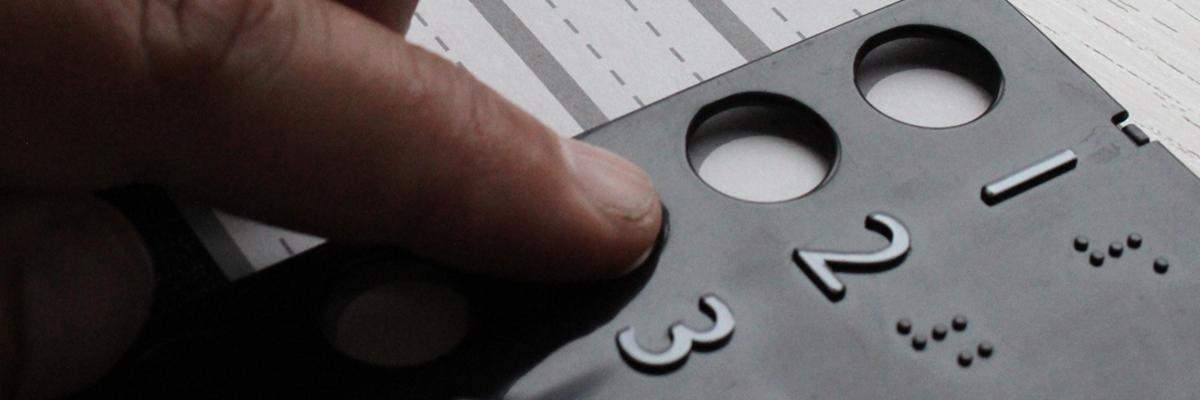Canadians are headed to the polls on September 20 to exercise their democratic right to vote, either at advanced polls, using a mail-in ballot, or on election day. But for Canadians with sight loss, voting isn’t as simple as walking into a voting booth or requesting a mail-in ballot and checking off a name.
This is particularly problematic in the context of the COVID-19 pandemic when many Canadians will choose to vote using the mail-in ballot process. Elections Canada predicts that as many as 4 million Canadians will choose the mail-in ballot during a pandemic election.
However, the 1.5 million Canadians who are blind or partially sighted cannot avail themselves of this option as mail-in ballots do not come with the accessible tools and services available at polling locations that can help an elector with a print disability independently mark their ballot.
Elections Canada has made some improvements over the years, including tactile overlay templates, braille and large print lists of candidates, and magnifying glasses for electors with sight loss – but there is still so much work to be done to ensure Canadians with sight loss can independently mark and verify their ballots.
“Canadians with sight loss still don’t have the ability to mark and independently verify their ballots,” says Duane Morgan, executive director of CNIB Newfoundland and Labrador and New Brunswick, who regularly consults with Elections Canada's Advisory Group for Disability Issues. “Sighted Canadians can vote in secret, but individuals who are blind must show their ballots to a sighted person to make sure it’s marked the way they want. That has to change and there's no reason why it can't.”
CNIB has made several recommendations to Members of Parliament, Senators, and Elections Canada to improve the accessibility of the voting process for electors with sight loss, such as implementing telephone voting for electors with disabilities, and electronic voting tabulators with audio output – similar to processes implemented in provinces and municipalities across the country.
“It’s 2021, we’re living in a digital age, but we’re still relying on lead pencils and paper ballots for the most fundamental right of a free society,” says Lui Greco, Manager of Regulatory Affairs with the CNIB. “The legislation and voting process in this country needs to keep pace with technology and federal accessibility legislation to enable everyone to cast their ballot in a way that works for them.”
Technology can level the playing field for voters who are blind or partially sighted. In the 2019 federal election, some voters cast their ballots independently with a magnifying device behind the voting screen, while others could have used applications on their smartphones. However, this was not widely used because there were no official policies and procedures in place, and some voters – especially seniors – did not have access to smartphones.
If the 2021 federal election is not fully accessible for all Canadians, CNIB urges the federal government to make this the last federal election that is inaccessible for Canadians with sight loss.
CNIB has been advocating for the accessibility of federal elections since the 1930s. To learn more about CNIB's election advocacy efforts, visit cnib.ca/90years.
